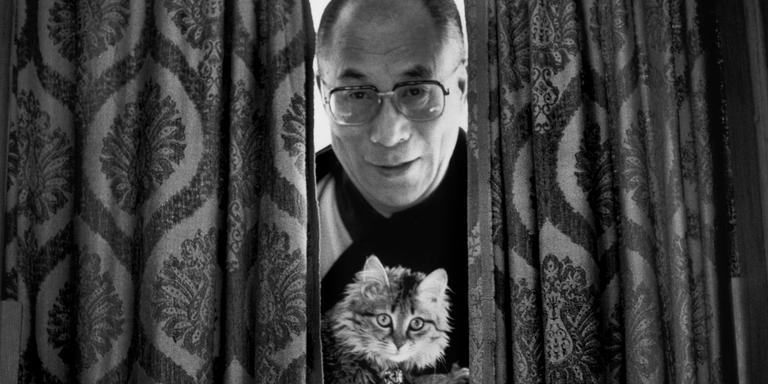


The early days of the Dalai Lama: From prophecy to exile
Long Read'The Dalai Lama's extraordinary journey' (1/6). The spiritual leader of the Tibetans was back in the news this spring, because of a controversy over his behavior toward a child. Le Monde retraces the journey of Tenzin Gyatso, the 88-year-old man who embodies the destiny of Chinese-occupied Tibet.
It was in Taktser, a remote village on the Tibetan border, in 1937. That day, in a modest farmhouse made from stone and mud, a toddler seized the ritual objects presented to him by high lamas from Lhasa, the capital: "Mine! Mine!" he said. These objects belonged to the 13th Dalai Lama, who had died four years earlier. The little boy, aged just 3, was called Lhamo Dhondup and was soon identified as the tulku (reincarnation) of his late predecessor. While the specter of a new world war loomed elsewhere on the planet, the Snow Kingdom, that Tibet still shrouded in mystery and almost cut off from the outside world, had just found its new spiritual guide.
Heir to a lineage dating back to the year 1391, the child's beginnings were classic for a young Dalai Lama: Not only did he identify things he had no reason to have seen before, according to the prevailing Tibetan "narrative," but he reacted in the language of Lhasa, which he could not possibly have known: The Tibetan dialect spoken by his parents in the distant Amdo province was quite different. As during the "missions" organized over the centuries to find the tülkus of previous Dalai Lamas, in the eyes of Tibetans, signs such as these proved beyond a doubt that a new "ocean of wisdom" had been found. Dhondup, the aptly named "auspicious goddess" at his birth, became Tenzin Gyatso, his name as Dalai Lama, the 14th in his line.
The child's first journey to Lhasa in 1939, carried on a palanquin pulled by two mules through the sumptuous landscapes of the high plateaus, inaugurated a destiny nothing short of extraordinary. In 1950, the Chinese invasion upset the young man's political timeline, as he would normally have had to wait until adulthood to assume his status as temporal ruler. With the red flag already flying over the eastern regions of Tibet, the Kashag (government) decided to end the current regency and hand over the reins of the country to a 15-year-old teenager. His very young holiness was unwillingly thrust into history.
A real protective barrier
Now 88 and living in exile in his Himalayan home of Dharamsala, India, the "Precious Protector" is embarking on the final leg of the journey he began in Taktser over eight decades ago. Throughout this time, the veneration he has enjoyed by some 7 million Tibetans, including some 130,000 scattered across five continents, has never wavered: The "Presence" (kundun), as he is also known to his followers, remains the object of a community like no other. As spiritual leader, he oversees the four great schools of Tibetan Buddhism: the Gelugpa sect, to which he belongs, the most recent and the so-called "reformed" school (14th century); that of the Nyingmapa, the "elders"; that of the Sakyapa, which favors meditative practices; and finally that of the Kagyupa, the school of "oral transmission."
You have 84.66% of this article left to read. The rest is for subscribers only.
